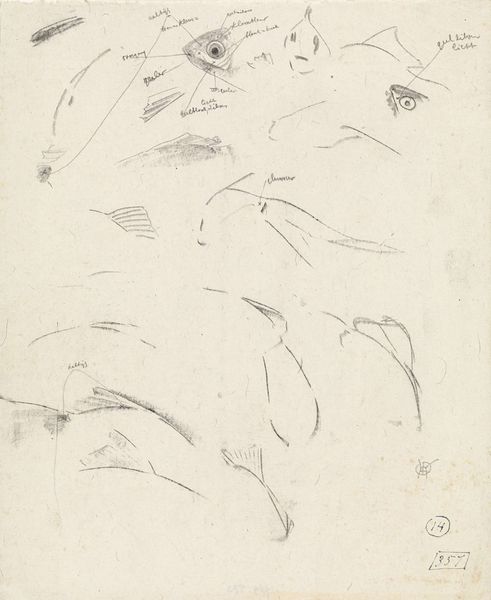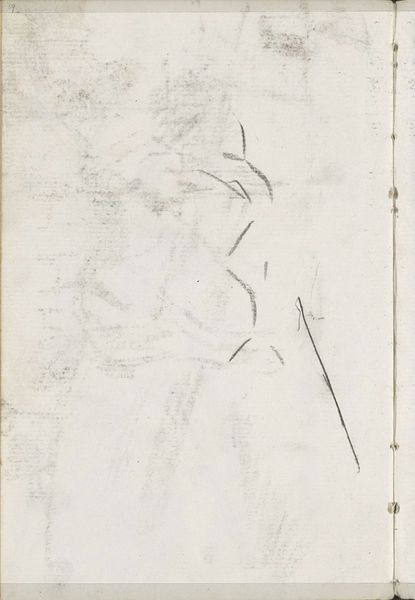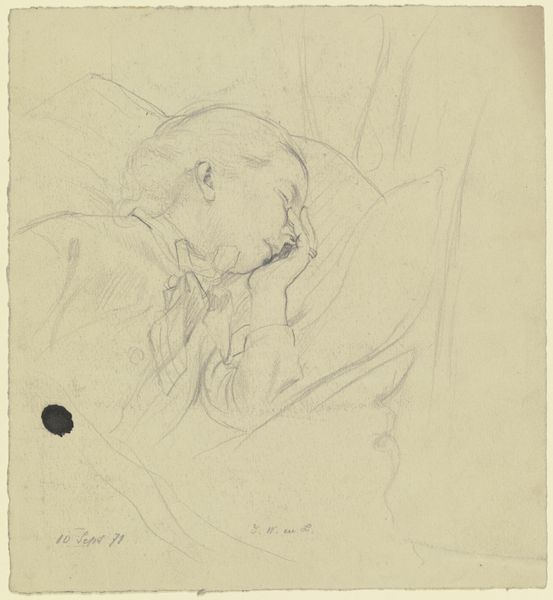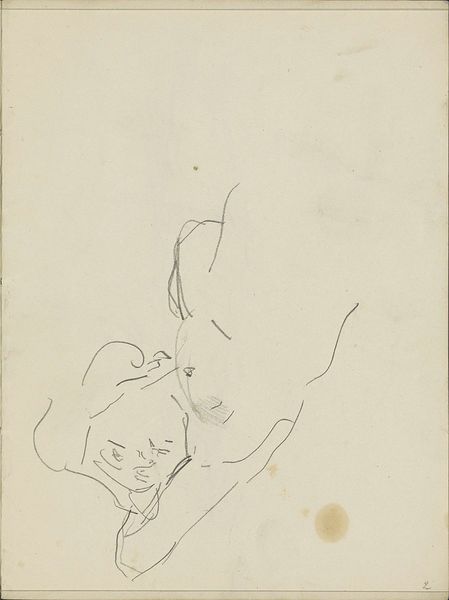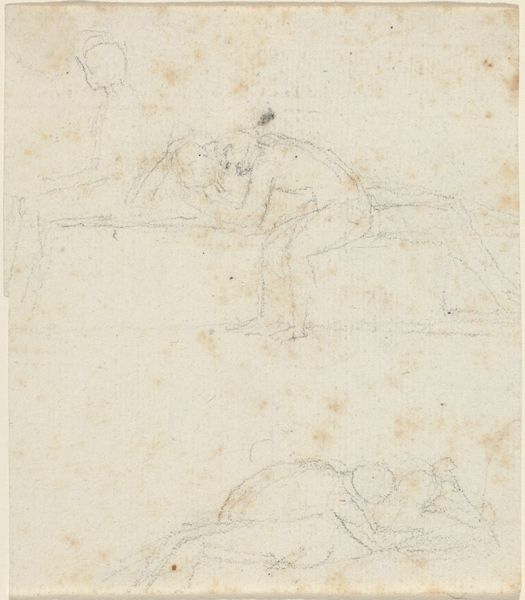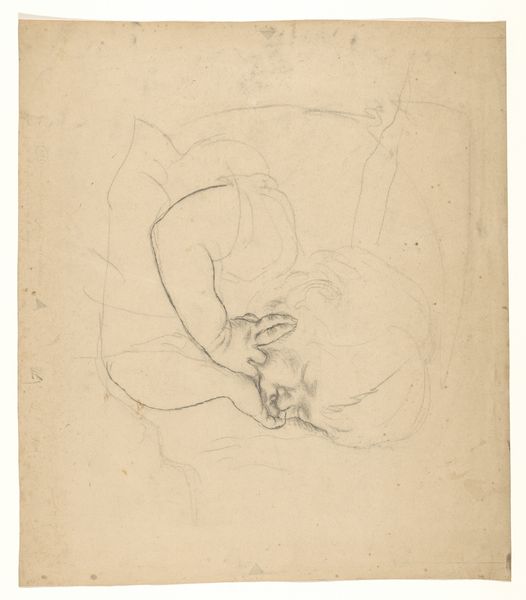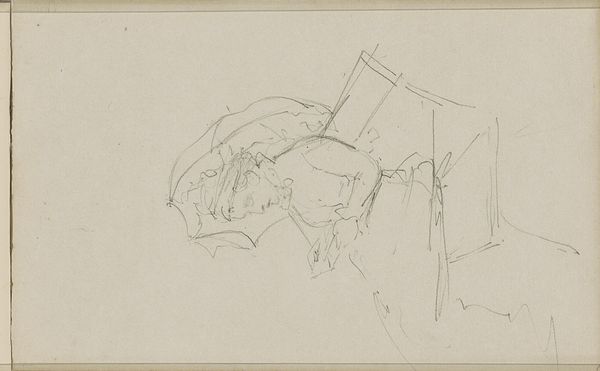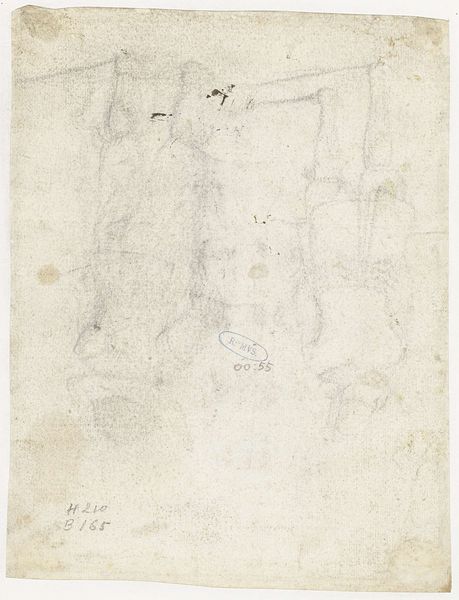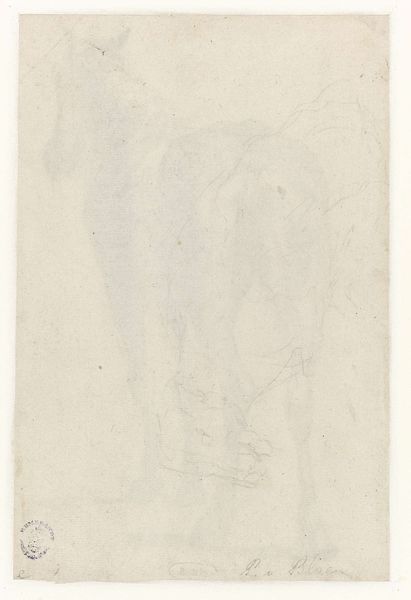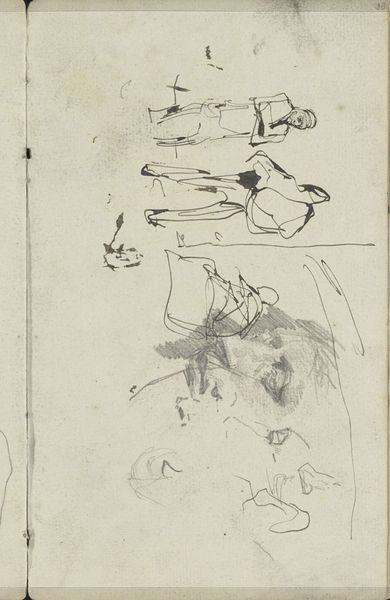
Fragment van een schets met een kind en een zittende figuur 1706 - 1770
0:00
0:00
drawing, paper, ink
#
portrait
#
drawing
#
baroque
#
figuration
#
paper
#
ink
#
child
Dimensions: height 219 mm, width 140 mm
Copyright: Rijks Museum: Open Domain
Editor: So, this is "Fragment van een schets met een kind en een zittende figuur," a sketch in ink on paper by Giovanni Battista Tiepolo, dating from around 1706 to 1770. It’s hard to make out clearly, but the linework has an interesting fluidity. How do you interpret this work? Curator: This sketch, like much of Tiepolo’s work, gives us a glimpse into the social structures of 18th-century Venice. I wonder, who are these figures? Is this an intentional representation of a Madonna and Child, with all of its inherent political implications for the family structure, or is it merely a fleeting impression of figures in his daily life? The quickness of the lines speaks to a rapidly changing society, always in flux but entrenched in its traditions. Editor: I hadn’t considered that. The loose sketching made me think it was more informal. Do you think he was aware of capturing power dynamics in the family structure? Curator: Absolutely. Consider Tiepolo's commissions. They are often for the elite, to bolster and legitimise the status quo. Even in a preliminary sketch like this, there's an understanding of the roles within the frame and outside it. What do those family structures represent in the Venetian social order? The sketch itself becomes an act of either reaffirming or subtly questioning that order. It is both personal and political. Editor: So even a seemingly simple drawing reflects bigger societal issues and power structures? Curator: Precisely. Art is never created in a vacuum. Think about who gets depicted, who does the depicting, and how these choices interact with the wider cultural conversation. These lines invite us to unpack a lot! Editor: This makes me see the drawing completely differently, a window into society and politics of its time. Curator: It shows the power that even the most ephemeral artworks possess in preserving and critiquing social norms.
Comments
No comments
Be the first to comment and join the conversation on the ultimate creative platform.
